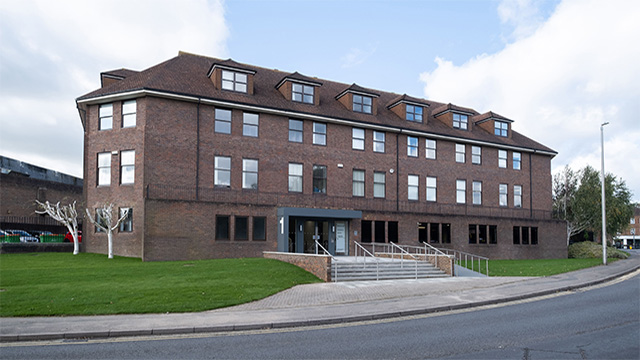Community collaboration: storytelling is the key
MIPIM 2019: Let me tell you a story. That’s it. That’s the story. Real estate needs to tell a story. An honest, simple story. The end.
That was the theme of the discussion when a panel of experts gathered at MIPIM 2019 to discuss “the holy grail for community collaboration”.
“We, as an industry, need to open up and learn how to tell stories, not just talk about facts and figures,” said Virginia Blackman, a principal at Avison Young.
MIPIM 2019: Let me tell you a story. That’s it. That’s the story. Real estate needs to tell a story. An honest, simple story. The end.
That was the theme of the discussion when a panel of experts gathered at MIPIM 2019 to discuss “the holy grail for community collaboration”.
“We, as an industry, need to open up and learn how to tell stories, not just talk about facts and figures,” said Virginia Blackman, a principal at Avison Young.
Too often when it comes to regeneration projects, particularly those that include the public sector alongside a private developer, it is the protest groups that tell their stories best, loudest and to the widest audience.
Real estate, said the panel, tends to shy away from telling human stories, from talking about the individual impact that the industry’s actions can have on people, and instead reverts to the “value” that the regeneration will bring. The real estate community will talk about what it is building for the community – a new library, a sports centre, green space – but it won’t tell a story about what impact it is having on an individual in a community.
Blackman said that to be able to tell those stories the industry first needed to build trust. She said this was key to being able to create long-term partnerships with communities.
“It’s our duty to build that trust and be clear about what we are consulting on, and address any issues that arise from that consultation early,” she added.
Serious approach
Colin Murray, partner and head of local government at law firm DWF, agreed. He said that the consultation process needed to be taken seriously by the real estate community.
“Consultation with the community can really drive constructive collaboration,” said Murray, “but consultation has to come at the very beginning and it has to allow sufficient time for response.”
The panel agreed that often consultation would come later and then any feedback gathered from it would be deemed too late to influence the project.
Ask and then make sure you listen, explained Murray. “Everyone should evidence the consultation and use it as part of the decision-making process,” he added.
Jason Hawthorne is director of VU.CITY, a business that develops 3D interactive digital cities to enable better insights into how developments interact and impact the community around them. He believes that web-based platforms, such as VU.CITY, are the way forward when it comes to better consultation, and therefore collaboration.
“The wider the audience, the better the consultation process,” he said. “The key is engaging with the time-poor audience and millennials, and web-based platforms are the way forward. Be bold and give people enough time and information so they can actually engage and respond.”
Tim Lowe, founder of Lowe Guardians, a business that provides guardians for empty buildings and affordable housing for those unable to rent or buy, agreed that more needed to be done to engage with the younger generation.
He said that millennials wanted to collaborate but that there was an element of animosity among them that needed to be overcome; that there was a need for trust in the real estate community and for them to hear and believe the stories as they were told.
“People want to influence the spaces around them,” said Lowe. “Technology means it is easier than ever to reach out, but developers must make the effort to be present in the community.”
To meaningfully engage, and to find the holy grail for collaborations, developers and local authorities need to make sure that they plan consultations properly and that they are conducted through the right mediums so that everyone can have a say. Both the real estate community and the public need also to be prepared to have difficult conversations and to listen to each other.
“Projects can have such great impacts on communities,” said Blackman. “But as an industry we need to be much better at storytelling to clearly communicate the benefits they will create.”
The holy grail? Consultation, collaboration, community and communication, clearly.
The panel
Virginia Blackman, principal, Avison Young
Jason Hawthorne, director, VU.CITY
Tim Lowe, chief executive and founder, Lowe Guardians
Colin Murray, partner and head of local government, DWF
Chair: Samantha McClary, editor, EG
In partnership with
To send feedback, e-mail samantha.mcclary@egi.co.uk or tweet @samanthamcclary or @estatesgazette
EG is proud to continue its role as official media partner at the world’s leading property market event. With a focus on promoting UK investment through a global lens, click here to follow the latest news, read EG’s new investor guides and keep up to date with social media.











